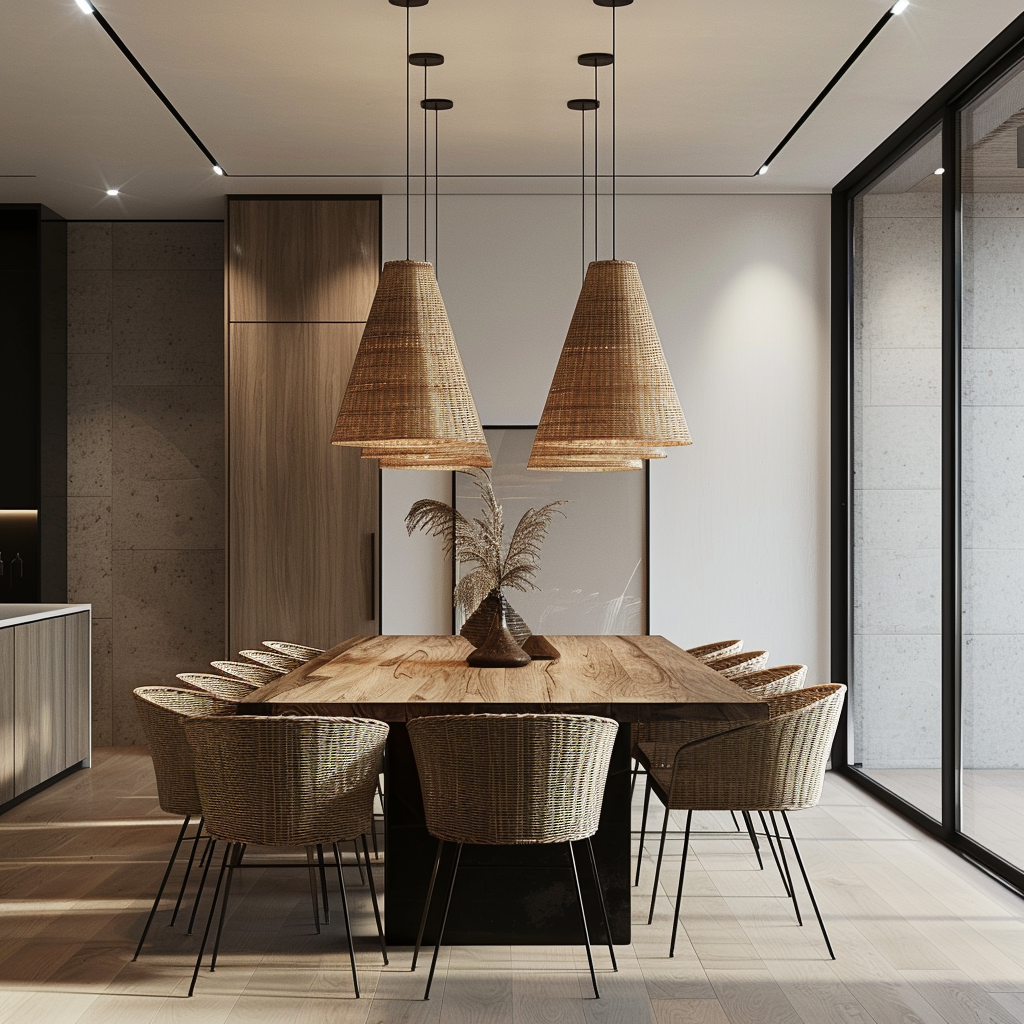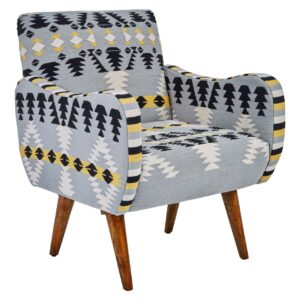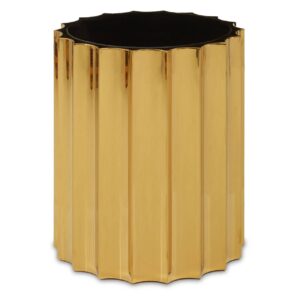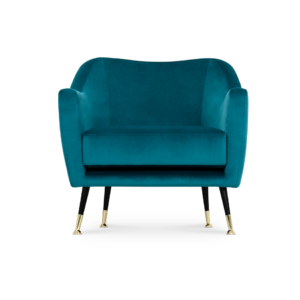Inspiration
INTERIOR DESIGN STYLES TO CONSIDER FOR YOUR HOME
Unveil Luxury, Unleash Comfort – Eclectic Niche.
Embarking on the journey of designing your living space can be both exciting and overwhelming. With an array of interior design styles to choose from, it’s easy to feel daunted by the sheer volume of options. Whether you’re drawn to the clean lines of modern design, the eclectic vibe of bohemian decor, or the timeless elegance of traditional interiors, understanding the fundamentals of each style is crucial.
The key to creating a space that feels uniquely yours lies in being well-informed. By familiarizing yourself with different design styles, you can determine which one resonates most with your personal taste and lifestyle. Alternatively, you might find that a blend of styles best reflects your individuality.
This article aims to demystify the world of interior design by offering a comprehensive overview of popular styles, practical tips for choosing the right one, and advice on how to seamlessly combine elements from different styles. With this knowledge, you’ll be well-equipped to transform your home into a space that is not only beautiful but also perfectly suited to your needs and preferences.
Table of Contents
Popular Interior Design Styles
- Modern
- Contemporary
- Bohemian
- Industrial
- Scandinavian
- Rustic
Other Practical Considerations
Popular Interior Design Styles
The following are some of the most sought-after interior design styles, with insights into their key features and ideal applications.
Modern
Modern interior design is characterized by its simplicity and clean lines, emphasizing a minimalist approach. Spaces are clutter-free, adhering to the philosophy of ‘less is more.’ This creates an environment that feels open and airy, making it ideal for contemporary living.
Neutral color palettes dominate modern interiors, with whites, grays, and blacks forming the base. These are often complemented by bold accent colors, which add interest without overwhelming the space. The use of color is deliberate and sparing, ensuring a cohesive and harmonious look.
Open floor plans are another hallmark of modern design, promoting a sense of spaciousness and flow between different areas of the home. Large, unadorned windows allow for an abundance of natural light, enhancing the bright and open feel of the space.
Materials commonly used in modern interiors include glass, metal, and steel, which contribute to the sleek and streamlined aesthetic. These are often combined with natural elements like wood to add warmth and texture.
Furniture in modern design is both functional and visually appealing, typically featuring clean lines and minimal ornamentation. The focus is on the beauty of the materials and the simplicity of the forms, avoiding excessive decoration and unnecessary embellishments.

Contemporary
Contemporary interior design is ever-evolving, reflecting the latest trends and innovations in the design world. Unlike modern design, which adheres to a specific time period, contemporary design is fluid and dynamic, allowing for a mix of styles and influences that keep it fresh and relevant.
A hallmark of contemporary interiors is the use of clean lines and smooth surfaces. This creates a sophisticated and uncluttered look, often with an emphasis on open and airy spaces. Neutral color schemes dominate, with whites, grays, and beiges serving as a backdrop for more vibrant accents. This allows for flexibility in updating the look with trendy colors and accessories as tastes change.
Texture plays a crucial role in contemporary design, adding depth and interest to its minimalist approach by blending materials such as metal, glass, and stone with softer elements like fabric and wood. Lighting is also essential, often highlighting architectural features and creating focal points. Contemporary interiors typically use a combination of natural and artificial lighting, including recessed lights, track lighting, and floor lamps, to ensure a well-lit, welcoming space.
Furniture in contemporary interiors is functional and simple, prioritizing comfort and usability with clean lines and geometric shapes, avoiding the ornate details of traditional styles.
Contemporary design is ideal for those who appreciate a modern, sophisticated aesthetic that can adapt to changing tastes and trends. It works well in urban apartments, where the emphasis on open space and light can make smaller areas feel more expansive. The clean lines and minimalistic approach are also well-suited to homes with open floor plans, allowing for a seamless flow between living areas.

Bohemian
Bohemian interiors, often referred to as “boho,” are known for their eclectic and free-spirited aesthetic. This style embraces individuality and creativity, resulting in spaces that are vibrant, diverse, and full of character. One of the standout features of bohemian interiors is the use of rich, bold colors and an array of patterns. This includes jewel tones, earthy hues, and intricate patterns from different cultures, which are often layered together to create a visually stimulating environment.
A key element in bohemian design is the mix of textures. This can be seen in the use of various materials such as rattan, wicker, and macramé, alongside textiles like plush rugs, tapestries, and throw pillows. These elements combine to create a tactile and inviting space. Vintage furniture and accessories are also prominent in bohemian interiors, adding a sense of history and uniqueness to the décor. Pieces are often sourced from thrift stores, flea markets, or travels abroad, resulting in a collection that feels curated and personal.
Bohemian interiors often feature a blend of the old and the new, with antique or vintage items placed alongside contemporary pieces. This juxtaposition enhances the eclectic vibe and ensures that no two bohemian spaces are alike. Houseplants and natural elements play a significant role in boho design, bringing a sense of nature and tranquility indoors. Plants of varying sizes and types are used to add life and color, often displayed in creative ways such as hanging planters or repurposed containers.
Art and personal artifacts are integral to bohemian interiors, reflecting the homeowner’s travels, passions, and experiences. Walls are frequently adorned with a mix of artwork, photographs, and handcrafted items, creating a gallery-like effect that tells a story. Lighting in boho spaces tends to be warm and ambient, often achieved through the use of fairy lights, lanterns, and candles, which contribute to a cozy and inviting atmosphere.
The unique features of bohemian interiors lie in their ability to combine diverse elements into a cohesive and harmonious space. This style encourages self-expression and experimentation, making it a perfect choice for those who want their home to reflect their personal journey and artistic sensibilities.

Industrial
Industrial interior design is defined by its raw, unfinished look, drawing inspiration from warehouses, factories, and other industrial spaces. This style emphasizes the beauty of raw materials and structural elements, creating an aesthetic that is both rugged and chic.
Exposed brick walls are a totem of industrial interiors, adding texture and character to the space. This feature is often complemented by exposed ductwork and pipes, which contribute to the overall industrial vibe. These elements are typically left in their natural state, showcasing their raw, unrefined beauty.
The use of metal is prominent in industrial design, with materials like iron, steel, and aluminum taking center stage. These metals are often used in furniture, fixtures, and architectural details, lending a sturdy and utilitarian feel to the space. Reclaimed wood is another key material, adding warmth and contrast to the cool, hard surfaces of metal and concrete.
Open spaces are a critical element of industrial interiors, echoing the expansive nature of industrial buildings. High ceilings and large windows help to maintain this sense of openness, allowing natural light to flood the space and enhance its airy feel. The layout is typically open-plan, with minimal walls and partitions, creating a seamless flow between different areas.
Furniture in industrial design is functional and often features a mix of materials, such as wood and metal. Vintage and repurposed pieces are common, adding to the eclectic and utilitarian aesthetic. This style favors pieces with a history or a sense of being repurposed, contributing to the overall theme of functionality and practicality.
Color palettes in industrial interiors are usually muted and neutral, with shades of gray, black, and brown dominating. These colors help to highlight the natural beauty of the materials used, while also maintaining a cohesive and understated look.
Lighting plays a crucial role in industrial design, with an emphasis on fixtures that have a utilitarian feel. Pendant lights with metal shades, Edison bulbs, and factory-style lamps are popular choices, enhancing the industrial ambiance and providing ample illumination.

Scandinavian
The Scandinavian interior design, originating from the Nordic countries—Denmark, Norway, Sweden, Finland, and Iceland—reflects the region’s lifestyle and climate, emphasizing comfort and practicality. The term “Scandinavian” embodies the aesthetic and practical solutions developed in these countries to address their unique environmental conditions and cultural values. Scandinavian design has become synonymous with an understated elegance that prioritizes functionality, simplicity, and a deep appreciation for nature.
A stand out feature of Scandinavian interiors is their light and airy feel. This is achieved through the use of a predominantly white color palette, often accented with soft, muted tones like pale blues, grays, and pastels. The abundance of light colors helps to maximize natural light, essential in a region known for its long, dark winters. Large windows, often left bare or with minimal coverings, further enhance the brightness and openness of the space.
Natural materials are integral to Scandinavian design. Wood is a dominant element, used in flooring, furniture, and decorative pieces. Lighter woods like pine, birch, and beech are preferred, contributing to the overall light and organic aesthetic. Other natural elements, such as wool, leather, and linen, are commonly used in textiles, adding warmth and texture to the interiors.
The furniture in Scandinavian interiors is characterized by its clean lines, simplicity, and functionality. Pieces are often designed with a dual purpose in mind, reflecting the Scandinavian ethos of practicality. Despite their functional nature, the furniture maintains a sleek and elegant appearance, with a focus on craftsmanship and quality materials.
Scandinavian design also emphasizes a strong connection to nature and the outdoors. This is reflected in the use of plants and botanical elements, which bring a touch of greenery and life into the home. Additionally, the design often includes elements that evoke the natural world, such as stone accents and nature-inspired artwork.
Scandinavian interiors are celebrated for their cozy and inviting atmosphere, often referred to as ‘hygge’ in Danish culture. This concept of coziness and comfort is achieved through the use of soft textiles, warm lighting, and thoughtfully arranged spaces that encourage relaxation and social interaction.

Rustic
This style originated from the need for practical and durable living spaces in rural areas. It draws inspiration from log cabins, farmhouses, and mountain lodges, where materials were sourced locally and designs were crafted for functionality and comfort. The rustic style has evolved to blend traditional elements with modern conveniences, making it a popular choice for those looking to create a warm and inviting home.
Rustic interior design emphasizes the beauty of the outdoors and brings a sense of the countryside into the home. It is defined by its use of raw and natural materials, creating spaces that are both warm and authentic while prioritizing comfort and coziness. Furniture is typically sturdy and robust, with an emphasis on comfort. Overstuffed sofas, large armchairs, and chunky wooden tables are common. Decorative elements often include handcrafted items, vintage finds, and pieces with a weathered, antique look.
Wood is a predominant feature of rustic interiors, often in the form of exposed beams, wooden floors, and reclaimed wood furniture. Stone is also commonly used, particularly for fireplaces and accent walls, adding texture and a rugged feel. These materials celebrate imperfections and natural beauty, giving each piece a unique character.
The color palette in rustic interiors is inspired by nature, featuring earthy tones such as browns, greens, and beiges. These colors create a warm and soothing environment that feels connected to the outdoors. Additionally, rustic design often incorporates elements like leather, wool, and other natural fibers, enhancing the tactile experience of the space.

Other Practical Considerations
Beyond personal taste, other practical considerations are equally important in guiding you in choosing the right interior design style. As discussed above, understanding the popular styles—Modern, Contemporary, Industrial, Scandinavian, Bohemian, and Rustic—provides a foundation, but these practical factors will ensure your choice is sustainable and functional.
One crucial factor is your budget. Different styles can vary significantly in cost, depending on materials, furniture, and decor items. For instance, a Modern style with high-end finishes like glass and steel might be more expensive than a Rustic style that uses reclaimed wood and vintage pieces. Assess your budget realistically and prioritize spending on elements that will have the most significant impact.
Next, consider the architecture and existing elements of your home. Some styles may naturally align better with your home’s structure and features. For example, a rustic style with its emphasis on natural materials and cozy elements might be perfect for a countryside home, while a sleek, modern design could enhance the look of a contemporary apartment.
Don’t be afraid to mix and match styles to create a unique look. Combining elements from different design styles can result in a space that feels personalized and dynamic. For instance, you might blend the minimalism of Scandinavian design with the warmth of Rustic elements to create a cozy yet streamlined space.
The climate of your location can also influence your choice. For example, a Scandinavian style with its light colors and airy feel may be ideal for brightening up a home in a colder, darker climate. Conversely, a Mediterranean or Coastal style could complement a home in a warmer, sunnier location, making use of light fabrics and breezy layouts.
Consider your future plans and flexibility needs. If you anticipate changes such as growing your family or needing a home office, choose a style that can adapt. Modular furniture and versatile design elements found in styles like Contemporary can be reconfigured as your needs evolve.
Another consideration is the amount of maintenance required for each style. Some designs, like Traditional or Industrial, may involve materials and features that require more upkeep, such as intricate woodwork or exposed brick walls. In contrast, styles like Contemporary or Scandinavian, which emphasize simplicity and clean lines, might be easier to maintain.
Choosing an interior design style with these factors in mind will help you make a well-rounded decision that ensures your home is not only stylish but also practical and enduring.
With all the information provided about popular interior design styles and practical considerations, you’re now ready to embark on your design journey. Understanding your options and the factors that influence your choice will help you create a home that perfectly suits your taste and lifestyle. Don’t hesitate to experiment with different styles and combinations to find what resonates with you. By blending creativity with practicality, you can transform your space into a beautiful and functional reflection of your personal style.
-

North West
Alvaro Black And Titanium Round Side Table
£500 Add to cart -

Essential Home
Charlotte armchair
£2,988 – £3,688 Select options This product has multiple variants. The options may be chosen on the product page -

North West
Estrella Large Round Vase
£92 Add to cart






